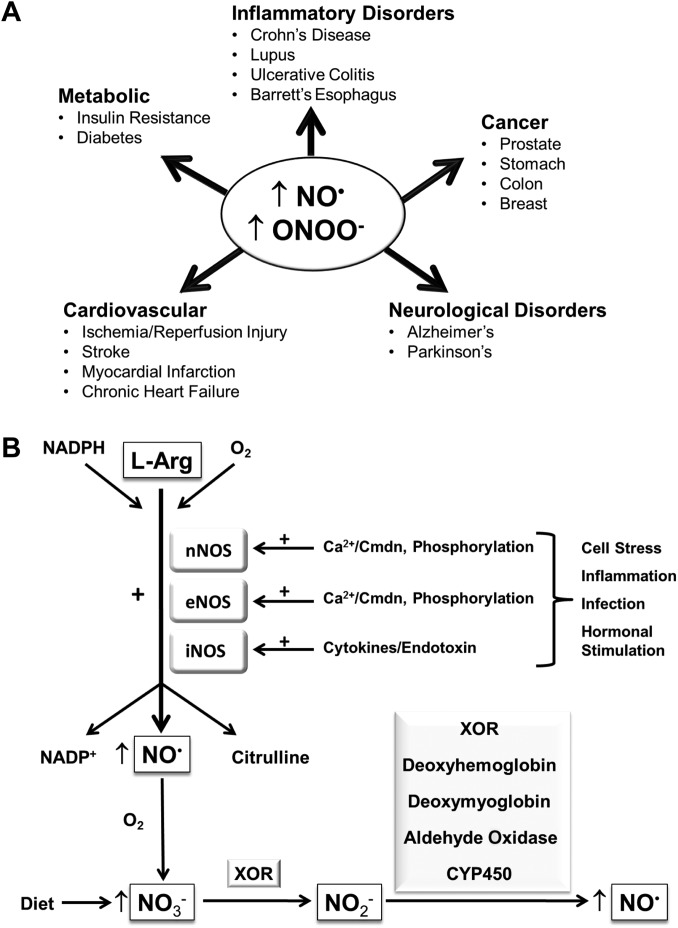Figure 1.
NO• production and its involvement in disease pathogenesis. (A) Schematic diagram illustrating the involvement of increased production of NO• and associated RNS (e.g. ONOO–) in the development of various pathologies. (B) NO• biosynthesis is predominantly catalyzed by three isoforms of NOS that exhibit distinct activation mechanisms and tissue distributions: namely nNOS, iNOS, and eNOS. All three NOS isoforms use L-arginine as a substrate, which is converted into NO• and citrulline, and oxygen and NADPH as co-factors. The enzymes nNOS and eNOS are constitutively expressed in mammalian cells and synthesize NO• in response to elevated intracellular calcium by increasing calmodulin (Cmdn) binding to NOS, although they may also be activated or inhibited through their phosphorylation by upstream protein kinases. In contrast, iNOS protein is either very low or undetectable in most cell types; however, stimulation with, for example, cytokines or endotoxins, can lead to increased iNOS gene transcription, resulting in enhanced production of NO• in certain cell types (e.g. immune cells). Alternatively, NO• can also be generated by the enzyme-mediated reduction of NO3– and NO2–, anions derived from the oxidation of NO• or through dietary sources, as indicated. CYP450, cytochrome P450. The plus sign (+) denotes a stimulatory effect.

